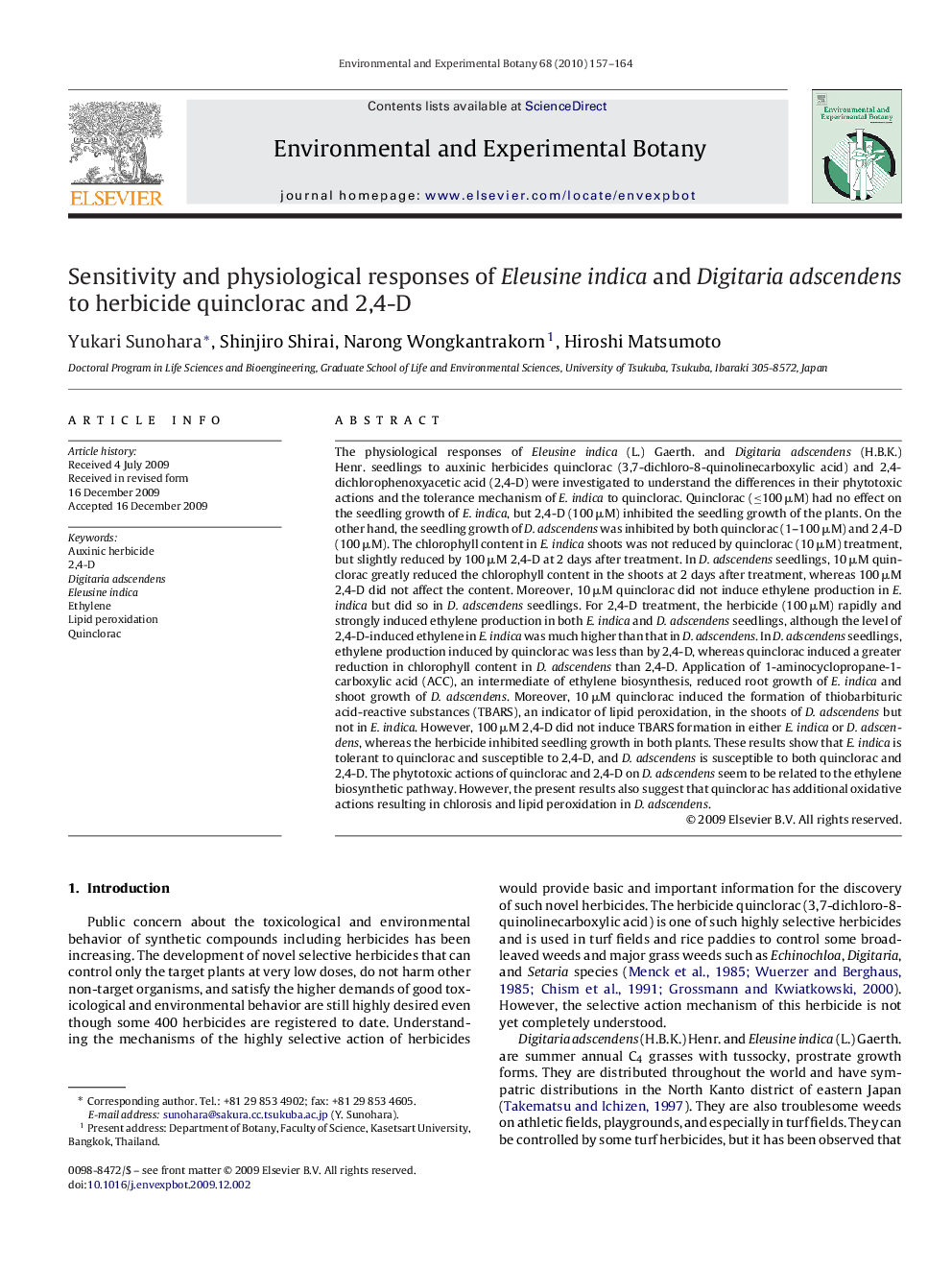| کد مقاله | کد نشریه | سال انتشار | مقاله انگلیسی | نسخه تمام متن |
|---|---|---|---|---|
| 4554952 | 1329236 | 2010 | 8 صفحه PDF | دانلود رایگان |

The physiological responses of Eleusine indica (L.) Gaerth. and Digitaria adscendens (H.B.K.) Henr. seedlings to auxinic herbicides quinclorac (3,7-dichloro-8-quinolinecarboxylic acid) and 2,4-dichlorophenoxyacetic acid (2,4-D) were investigated to understand the differences in their phytotoxic actions and the tolerance mechanism of E. indica to quinclorac. Quinclorac (≤100 μM) had no effect on the seedling growth of E. indica, but 2,4-D (100 μM) inhibited the seedling growth of the plants. On the other hand, the seedling growth of D. adscendens was inhibited by both quinclorac (1–100 μM) and 2,4-D (100 μM). The chlorophyll content in E. indica shoots was not reduced by quinclorac (10 μM) treatment, but slightly reduced by 100 μM 2,4-D at 2 days after treatment. In D. adscendens seedlings, 10 μM quinclorac greatly reduced the chlorophyll content in the shoots at 2 days after treatment, whereas 100 μM 2,4-D did not affect the content. Moreover, 10 μM quinclorac did not induce ethylene production in E. indica but did so in D. adscendens seedlings. For 2,4-D treatment, the herbicide (100 μM) rapidly and strongly induced ethylene production in both E. indica and D. adscendens seedlings, although the level of 2,4-D-induced ethylene in E. indica was much higher than that in D. adscendens. In D. adscendens seedlings, ethylene production induced by quinclorac was less than by 2,4-D, whereas quinclorac induced a greater reduction in chlorophyll content in D. adscendens than 2,4-D. Application of 1-aminocyclopropane-1-carboxylic acid (ACC), an intermediate of ethylene biosynthesis, reduced root growth of E. indica and shoot growth of D. adscendens. Moreover, 10 μM quinclorac induced the formation of thiobarbituric acid-reactive substances (TBARS), an indicator of lipid peroxidation, in the shoots of D. adscendens but not in E. indica. However, 100 μM 2,4-D did not induce TBARS formation in either E. indica or D. adscendens, whereas the herbicide inhibited seedling growth in both plants. These results show that E. indica is tolerant to quinclorac and susceptible to 2,4-D, and D. adscendens is susceptible to both quinclorac and 2,4-D. The phytotoxic actions of quinclorac and 2,4-D on D. adscendens seem to be related to the ethylene biosynthetic pathway. However, the present results also suggest that quinclorac has additional oxidative actions resulting in chlorosis and lipid peroxidation in D. adscendens.
Journal: Environmental and Experimental Botany - Volume 68, Issue 2, April 2010, Pages 157–164